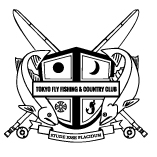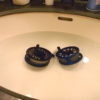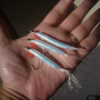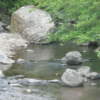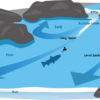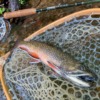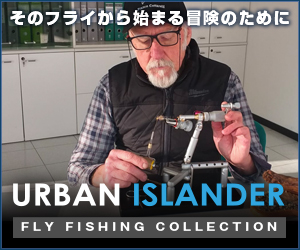What is Fly Pattern & Presentation?
Fish see things with completely different set of vision due to living underwater. Light human see is composed of RGB (red, green, and blue) and water absorbs R twice as much as G or B which makes everything is painted in bluish green under water. Variety of colours in objects are reduced into variety of brightness depending on how pale or dark or how close or distant. Under which circumstance, shape and volume of objects are more important.
Fish see things in "pattern" created by trick of light. If something is far, above water, or weakly blocks light, then it looks "pale". If something is closer or strongly blocks light, then it looks "dark". Artificial fly does not represent how "life like" to human eyes, but how it mimics patterns of impressions created by naturals.
A. Brightness and Shape as Pattern: Recognition by Dynamic Vision
When presenting fly in drift especially in river, brightness and shape of fly pattern in contrast with other factor of environment is important. You ought to let fish recognize your pattern or they will simply ignore your offering. Unlike vision of human living in atmosphere mostly designed to recognize symbols out of complex background, fish vision is generally tuned to recognize motion. Imagine when you are playing tennis. You can tell where the tennis ball is by identifying where your opponent is and how the trajectory of ball is, but once ball is going faster than you think, you will rely on dynamic vision to "sense" where the pattern created by object is.
For instance, high floating small object in unique shape appearing pale stands out in contrast against darkly shaded plant leaves drifting on surface.
If object appears as dark as other objects, it doesn't stand out and fish can ignore it.
In low light condition without many debris, pale doesn't stand out yet dark does vividly against surroundings.
B. Extra Factor: Ultra Violet
Colour of light we know is composed of RGB, but then fish can see the reflection of ultraviolet light as well. Some fish use this information, some don't.
As you can see in this extreme comparison between how RGB is deflected on butterfly and how ultraviolet is. Cherry salmon who use ultraviolet in his dynamic vision, for instance, can tell the difference between natural colour wing and white wing by how white deflects too much light and other parts don't.
C. Importance of Presentation: Sensory Recognition
However, light alone is not a stable factor of environment inside water. When sunlight weakens or too many particles blocking sunlight, it gets from bright to dark very easily.
Fish can still use dynamic vision to tell the subtle difference in motion created by something blocking or reflecting light, but through the ages of evolution, fish use other sensory system such as pulse and smell to determine where and what object is.
Something like this, if I'm to visualize it. Whether that's brightness, pulse, or smell, fish follow patterns.
Small may fly that fits to the size #18 hook with soft presentation creates a certain shape of "noise" which doesn't appear anything similar to a fly tied on size #12 hook that makes "much bigger noise".
D. Summary (for now, to be updated)
Now we know that fly pattern and presentation of that pattern are combined factor fish use as a clue in his world of dynamic vision. But if we narrow down our choice to only "mayfly" for now, it is more important how it blocks or passes the light and how it stands against the background in different lighting condition. Like great photography creates great impression, this is our canvas to draw attractive masterpiece to the very wild audience.
この記事のディスカッションに参加する | Join the Discussion
東京フライフィッシング&カントリークラブのFacebook グループ「Friends Lobby」ではメンバー以外の方とのディスカッションも行っています。気になる情報や質問などはこちらまで!
